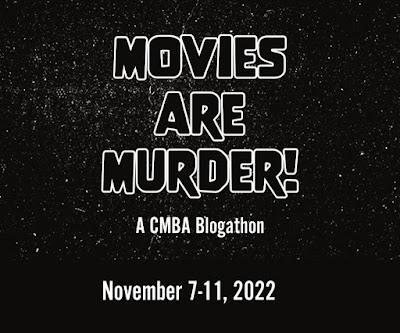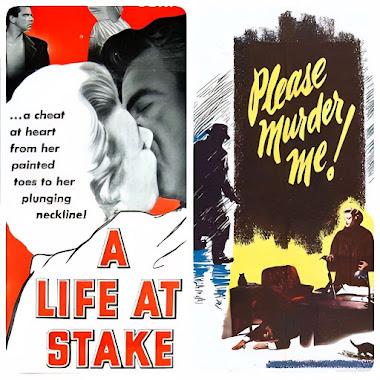
It was only with her passing last month that I found out Dame Angela Lansbury had made a couple of low budget films noir during her long, storied career. I was aware, of course, that she had played some memorably unpleasant female characters over the years. There was Nancy, Ingrid Bergman's cunning maid in Gaslight (1944), Lansbury's first film performance, and one for which she was Oscar-nominated. Then, two years later she portrayed the spiteful dance-hall queen, Em, nemesis of Judy Garland in The Harvey Girls (1946). Between those films, though, she had been Elizabeth Taylor's wholesome older sister, Edwina, in National Velvet (1945), and, in a lovely Oscar-nominated turn, had played the heartbreaking tavern singer, Sibyl Vane, in The Picture of Dorian Gray (1945). It would’ve been difficult to predict then, judging from her varied early credits at MGM, that Angela Lansbury would someday venture into down-and-gritty film noir. But there was one notable and noirish film just before she left MGM and her career began to languish. Kind Lady (1951), a suspense thriller, was one of her last under her studio contract. In it, Ethel Barrymore starred as a wealthy art collector, with Lansbury as part of a gang of malicious thieves set on taking over the woman’s life, fleecing her of all she has and then killing her.
a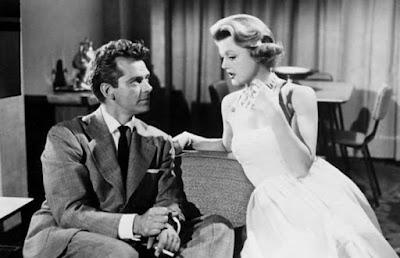
A Life at Stake (1955)
Angela Lansbury left MGM in 1952 and like so many other actors whose careers went into a spin as the studios went into decline, moved into series and anthology television, finding only occasional film work. Her first B-noir, A Life at Stake, would come in 1955. One of only two films issued by Hank McCune Productions, A Life at Stake is flimsy fare apparently made on a half-a-shoestring budget. A tired and erratic plot borrows from every noir, from Double Indemnity on, that involves a greedy woman and an enticing insurance policy. Keith Andes, who more often appeared in supporting roles, stars as an architect with financial problems who is lured into a real estate partnership by Lansbury, a seductive businesswoman with a husband. She and her spouse (Douglass Dumbrille) are less concerned with the property and construction business than they are with Andes taking out an excessively high “key man” insurance policy they plan to cash in on as soon as possible. Andes, in an agitated state through most of the picture, is alternatively wised up and gullible. Every time something occurs that rightly convinces him Lansbury is out to kill him (and she nearly does), she reels him back in with a sudden, transparently phony display of passion. Lansbury does the best she can with third-rate material. Meanwhile, older husband Dumbrille and Jane Darwell, as Andes’ landlady, aren’t given the time or space to add anything to this jumble. If that was even possible. There’s not much to recommend A Life at Stake, but at an hour and sixteen minutes, it’s worth watching for those with a penchant for obscure no-budget noir and, possibly, the devoted fans of Dame Angela.
A Life at Stake (1955)Directed by: Paul Guilfoyle Screenplay by: Russ Bender, Hank McCune Music by: Les Baxter Production Co.: Hank McCune Productions Distributed by: Filmmakers Releasing Org.; Monarch Film Corp. (UK) Starring: Angela Lansbury, Keith Andes, Douglass Dumbrille, Claudia Barrett, Jane Darwell Available on Prime Video, YouTube, etc.
Angela Lansbury would fare better with her second foray into B-noir. Please Murder Me! (1956), like A Life at Stake, was the product of another short-lived, cash-strapped production company, Gross-Krasne, with few credits in its filmography. But the director, Peter Godfrey, even if past his prime by this time, had some solid Hollywood experience, with Christmas in Connecticut (1945) and The Two Mrs. Carrolls (1947) among his credits. And this time Dame Angela would be paired with a more than worthy co-star, Raymond Burr, who was in the midst of his transition to television.
The scene is a city street at night. A man in an overcoat hustles through the shadows and into a pawnshop. He comes out with a gun, jumps into the back of a cab and heads to his office for a late appointment. Once there, the man, who is an attorney, carefully prepares for his meeting. He turns on a tape recorder and begins to dictate a tale told in flashback: how it all began, and how it is all going to end.
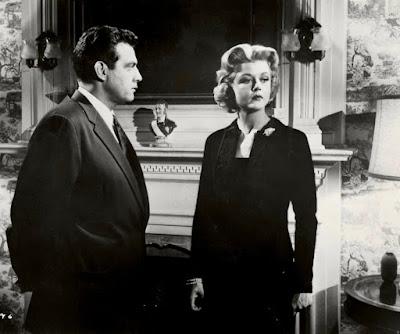
Please Murder Me! (1956)
Raymond Burr is that attorney, and his performance in this role might well have laid the groundwork for his being cast as Perry Mason in the TV series that began a year later, in 1957, and ran for nine consecutive seasons. Like Mason, this lawyer, Craig Carlson, is an honorable man who is profoundly serious about the law and justice. Thoughtful as well as methodical, he makes plans and chooses his words with equal care. The problem is that Carlson made the mistake of falling in love with his best friend’s wife, an upscale gold-digger played by Angela Lansbury. When she is charged with capital murder, Carlson defends her and with a shocking courtroom reveal, gets an acquittal. Later he will discover that he has been duped and will set about conjuring a clever plan – with a diabolical twist – to bring about not only vengeance and justice but to also relieve his guilt-ridden soul.
The slow moments are few, a bit too much time in the courtroom and in a scene in an artist’s loft, but Please Murder Me! generally moves at a good clip. The tricky plot, a capable director and a decent screenplay provide a nice showcase for two seasoned pros facing off in a duel to the death. Burr’s is the centerpiece role, and he plays it with no less style and command than he later gave to Mr. Mason. Lansbury easily handles the role of Myra Leeds, a self-assured schemer, confident of her skill in seducing and out-smarting the men in her life. Myra becomes more interesting when the tables turn and her former patsy of a defense attorney promises her that he will stop at nothing to bring her to justice. With this, she begins to unravel, becoming unsettled and fidgety, twitching and chain-smoking as she anxiously waits for the other shoe, a shoe that happens to be held by her former attorney, to drop.
Raymond Burr would step seamlessly from this into his star-making role as peerless defense attorney Perry Mason the following year. It would be another six years, years in which she began her climb to the top on Broadway, before Angela Lansbury would, in a truly brilliant, Oscar-nominated performance, portray the most evil of women, Eleanor Iselin, the power-mad mother from Hell in John Frankenheimer’s chilling Cold War thriller, The Manchurian Candidate.
Please Murder Me (1956) Directed by: Peter Godfrey Screenplay by: Al C. Ward, Donald Hyde; story by Ewald Andre Dupont and David T. Chantler Music by: Albert Glasser Production Co.: Gross-Krasne Productions Distributed by: Distributors Corp. of America Starring: Angela Lansbury, Raymond Burr, John Dehner, Dick Foran, Lamont Johnson Available on Prime Video, YouTube, etc.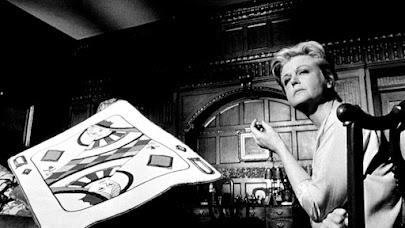
The Manchurian Candidate(1962)
~This post is my contribution to the Classic Movie Blog Association's Fall 2022 Blogathon, Movies are Murder, click here for links to all participating blogs.
